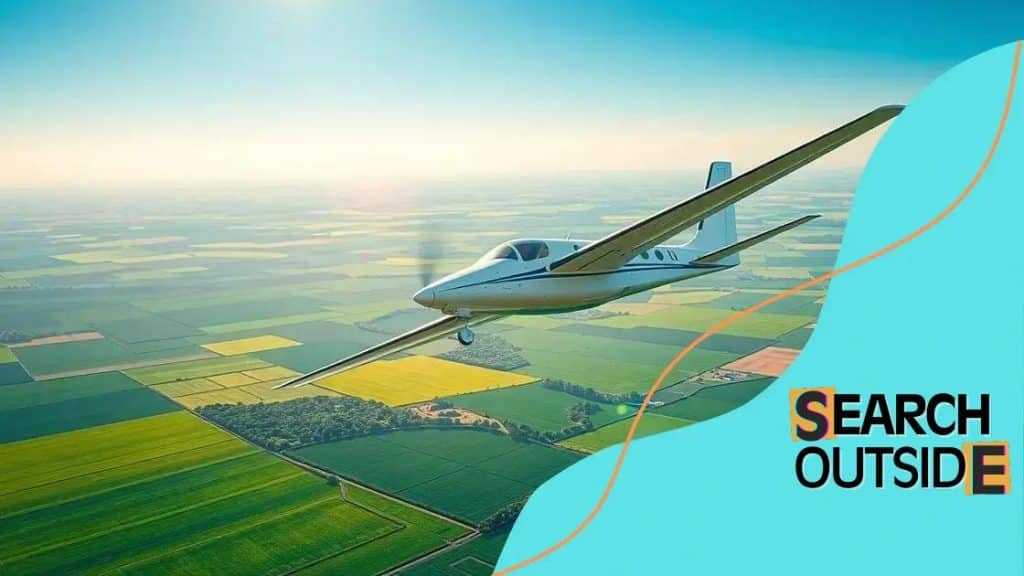The shift towards electric aviation and its environmental impact

The shift towards electric aviation is transforming air travel by reducing emissions and costs, supported by advancements in battery technology and growing market demand for sustainable solutions.
The shift towards electric aviation and its environmental impact is reshaping our approach to air travel. Have you ever imagined flying in a silent aircraft? This innovation not only reduces noise but also promises lower carbon emissions, making our skies cleaner.
Understanding electric aviation technology
Understanding electric aviation technology is essential in grasping the future of air travel. This technology is evolving quickly, driven by the need for greener transportation solutions. It promises to reduce emissions significantly, making flights more sustainable.
Key Components of Electric Aviation
Electric aviation relies on several key components that make it a viable alternative to traditional aircraft. One of the most important elements is the battery technology. Modern batteries are more efficient and lighter than ever before, allowing airplanes to fly farther and faster.
Benefits of Battery Technology
- Reduced weight leads to better fuel efficiency.
- Longer flight ranges enable more travel options.
- Lower maintenance costs over time.
Another crucial part of electric aviation is the electric propulsion systems. These systems replace traditional jet engines with electric motors that are quieter and cleaner. Not only do these systems produce less noise during takeoff and landing, but they also contribute to a more pleasant flying experience.
Additionally, renewable energy sources are increasingly being integrated into the charging infrastructure for electric aircraft. This means that airplanes can be powered by solar, wind, or hydroelectric energy, drastically reducing their carbon footprint. By utilizing clean energy, we can look forward to a future where air travel has a minimal environmental impact.
Challenges Ahead
Despite the advancements, electric aviation technology still faces challenges. Battery capacity is currently limited, impacting the range of flights. Furthermore, the infrastructure required to support widespread electric aircraft is still in development, and policy frameworks will need to catch up to these innovations.
However, as technology continues to advance, these hurdles seem less daunting. Innovations in hybrid systems could bridge the gap, providing a temporary solution while completely electric planes are being perfected. Ultimately, investors and manufacturers remain optimistic about the future of electric aviation.
Benefits of electric aircraft for the environment
The benefits of electric aircraft for the environment are becoming increasingly clear as technology evolves. Electric planes produce significantly less pollution compared to traditional fuel-powered aircraft. This reduction in greenhouse gases is crucial for combating climate change and making air travel more sustainable.
Lower Emissions
Electric aircraft generate near-zero emissions during flight. Unlike conventional airplanes that burn fossil fuels, electric planes run on electricity, which can be generated from renewable sources. This shift can drastically cut aviation’s carbon footprint.
Quieter Flights
- Reduction of noise pollution around airports.
- Improved flying experience for passengers and communities.
- Better hearing health for people living near flight paths.
In addition to their environmental benefits, electric planes can operate more efficiently. They often have reduced operating costs thanks to lower energy prices and fewer moving parts compared to traditional engines. This efficiency translates into financial savings for airlines and cheaper fares for passengers.
Electric aircraft also open doors for local air travel. With their ability to operate on smaller, regional routes, they can reduce the need for lengthy trips to major airports. This can help mitigate congestion in urban areas while providing convenient access for travelers.
Integration with Renewable Energy
One of the most noteworthy benefits is the potential for electric aircraft to integrate seamlessly with renewable energy sources. As solar and wind energy become more prevalent, the aviation industry can harness this power to charge electric planes. This creates a cycle of sustainability where flying becomes greener.
Current advancements in electric aviation

Current advancements in electric aviation are paving the way for a new era in air travel. As technology evolves, major improvements in battery efficiency and propulsion systems are making electric flights more feasible and frequent.
Battery Technology Improvements
One of the most significant advancements is in battery technology. New lithium-ion batteries are now lighter and have higher energy densities. This means electric aircraft can fly longer distances without needing to recharge. Research is ongoing to develop solid-state batteries, which promise even greater capacity and safety.
Efficient Propulsion Systems
- Electric motors are quieter and more reliable.
- Propulsion systems have fewer moving parts, which leads to lower maintenance costs.
- New designs are optimizing aerodynamics for better fuel efficiency.
Innovations in hybrid electric systems are also emerging. These systems use both electric and traditional jet power, allowing aircraft to take off and land using electric power while using jet engines at cruising altitude. This combination helps conserve energy during the most demanding phases of flight.
Furthermore, aerospace companies are collaborating with various tech firms to integrate advanced software for flight management. These systems help optimize energy usage during flights, maximizing efficiency while ensuring safety.
Regulatory and Infrastructure Support
Regulatory bodies are beginning to support these advancements by creating guidelines for electric aviation. Investment in charging infrastructure around airports is increasing, making it easier for airlines to adopt electric aircraft.
Such advancements signal a promising future for electric aviation. With ongoing research and development, it’s only a matter of time before we see electric planes commonly taking to the skies.
Challenges faced by electric aviation
Electric aviation is an exciting field, but it faces several challenges that need to be addressed for widespread adoption. The most significant hurdles involve battery capacity, infrastructure, and regulatory issues.
Battery Capacity Limitations
One of the main challenges is the current limitations of batteries. While advancements are being made, existing battery technology still does not provide the energy density needed for long-haul flights. This limits the range of electric aircraft, making them less viable for longer trips compared to traditional aircraft.
Infrastructure Requirements
- Electric charging stations at airports need to be widely available.
- Adequate maintenance facilities must be established to support electric aircraft.
- Airlines will need to invest in new charging mechanisms.
The lack of a robust charging infrastructure is another critical barrier to the growth of electric aviation. Airports need to invest in charging stations and maintenance facilities specifically designed for electric aircraft. Without this support, airlines are hesitant to adopt electric planes.
Furthermore, there are regulatory hurdles that the industry must overcome. Existing aviation regulations may not adequately support the operation of electric aircraft, which could slow down certification and operation processes. Engaging with regulatory bodies and developing new guidelines will be essential for the successful integration of electric aviation into the current aviation framework.
Public Perception and Acceptance
Public perception also plays a role in the acceptance of electric aviation. Many people are still unsure about the safety and reliability of electric flights, which can hinder user acceptance. To build confidence, the industry must demonstrate that these aircraft can operate safely and efficiently.
Future prospects of electric flight
The future prospects of electric flight are bright and full of potential. As technology continues to advance, we can expect to see more efficient and sustainable ways to travel through the skies.
Technological Innovations
Many researchers are working on breakthrough technologies that will enhance electric aviation. Innovations in battery efficiency are expected to enable longer flight ranges. Improvements in aerodynamics will also help electric aircraft to fly more efficiently.
Growing Market Demand
- Increasing pressure for sustainable transportation solutions.
- Rising fuel costs driving airlines to seek alternatives.
- More consumers prioritizing environmentally friendly travel options.
With the world focusing on reducing carbon emissions, there is a growing market demand for sustainable transportation. Electric aircraft fit this need perfectly. Airlines are starting to recognize the need to invest in electric flight to meet customer expectations and regulatory requirements.
Moreover, governments around the world are supporting clean aviation initiatives. They are investing in research and offering incentives for companies developing electric aircraft. This financial backing will help accelerate the deployment of electric flights in commercial aviation.
New Business Models
New business models are expected to arise in the electric aviation sector. For instance, urban air mobility solutions like air taxis could become a reality in the near future. These services would utilize electric vertical takeoff and landing (eVTOL) aircraft, allowing people to bypass ground traffic in busy urban areas.
As cities invest in infrastructure to support electric flights, we may see a combination of regional flights and urban mobility solutions. This fusion will help cater to the increasing demand for fast and efficient travel.
In summary, the shift towards electric aviation represents a significant opportunity for both the environment and the aviation industry. Electric aircraft promise to reduce emissions, fuel costs, and noise pollution. Despite the challenges, such as limited battery capacity and the need for infrastructure, many advancements are being made. With continued innovation, supportive regulations, and a growing market demand for sustainable travel, the future of electric flight looks promising. As we move forward, electric aviation could redefine how we think about air travel, making it greener and more efficient for all. Environmental Benefits: Electric planes reduce emissions, improving air quality. 🌱 Cost Efficiency: Lower fuel costs, leading to more affordable flights. 💰 Innovation Support: Advancements in battery and propulsion technology. ⚡ Regulatory Encouragement: Government support for clean aviation initiatives. 🏛️ Urban Air Mobility: Development of electric air taxis for urban travel. 🚖
FAQ – Frequently Asked Questions about Electric Aviation
What are the environmental benefits of electric aviation?
Electric aviation significantly reduces greenhouse gas emissions, contributing to cleaner air and lower pollution levels.
What challenges does electric aviation face?
The main challenges include limited battery capacity, the need for charging infrastructure, and regulatory hurdles that need to be addressed.
How is battery technology evolving for electric aircraft?
Recent advancements in battery technology are leading to lighter, more efficient batteries, increasing the range of electric aircraft.
What role will electric aircraft play in the future of air travel?
Electric aircraft are expected to revolutionize air travel by making it more sustainable and cost-effective, especially for short-haul flights and urban air mobility.





